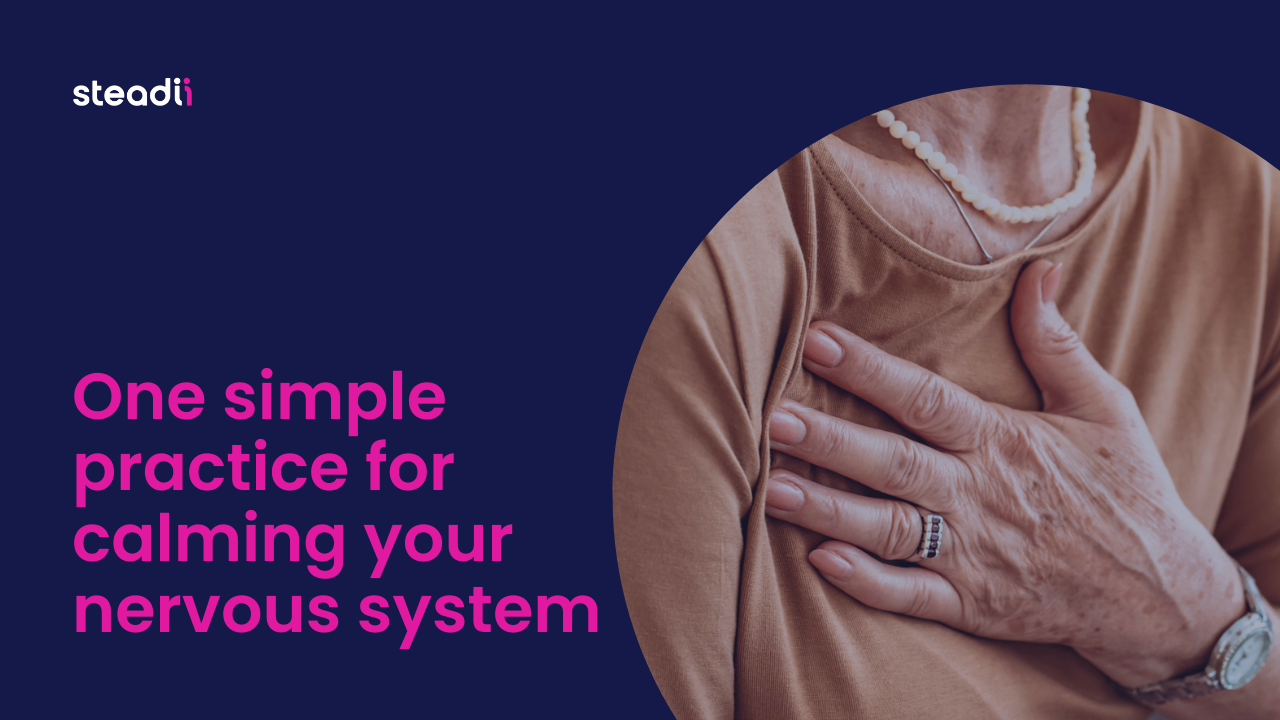One simple practice for calming your nervous system
Next time you’re feeling angry, overwhelmed, or stuck, try a simple breathing practice to calm your nervous system.
Have you ever felt overwhelmed by emotion, experienced racing thoughts, or found yourself stuck, not knowing what to do next? Learning intentional breathing practices for these moments is one of the most powerful ways to help calm yourself down and take the next step forward.
When you experience stress or anxiety, your nervous system can become overstimulated.
Experiencing a rush of emotion, racing thoughts, feeling stuck or frozen, or not knowing what to do next can all be signs that your nervous system is going off the rails.
Moreover, these emotions, thoughts, or feelings of stuckness aren’t good or bad; they’re part of life. Bringing awareness and implementing simple strategies can help you experience a greater sense of groundedness. This will give you a better chance at taking control of your thoughts and emotions before they start to take control of you.
The number one tool for calming your nervous system is already inside of you: your breath.
While everyday breathing happens thanks to our autonomic nervous system (fully automatic), controlled breathing is an excellent practice for calming the nervous system. Intentional breathing can reduce stress, increase alertness, and promote relaxation. Keep reading for three specific breathing techniques you can try practicing.
1. Diaphragmatic breathing
Diaphragmatic breathing is a technique that involves breathing deeply from your belly.
Place one hand on your chest and the other on your belly.
Inhale deeply through your nose, filling your belly with air. You should feel your hand on your belly rise as you inhale.
Exhale slowly through your mouth, pushing all the air out of your lungs. You should feel your hand on your belly fall as you exhale.
Repeat for several minutes, focusing on your breath and letting go of any thoughts or distractions.
To start, it may be helpful to practice diaphragmatic breathing in a quiet place. Once you get used to how it feels in your body, it becomes easier to use this strategy in the middle of a chaotic moment. Diaphragmatic breathing is a great way to calm your nervous system without anyone else knowing you’ve made a change.
2. Box breathing
Box breathing involves inhaling, holding your breath, exhaling, and holding your breath again. It is called box breathing because each part of the breath is equal in length, like the sides of a box.
Inhale deeply through your nose for a count of four.
Hold your breath for a count of four.
Exhale slowly through your mouth for a count of four.
Hold your breath for a count of four.
Repeat for several minutes, focusing on your breath and letting go of any thoughts or distractions.
Sometimes, watching a visual guide or tracing your finger in a square shape in the air as you breathe can be helpful. Trace one side of your imaginary square for each count of four, letting your breath guide your finger.
3. Alternate nostril breathing
Alternate nostril breathing is a strategy in which you breathe through one nostril at a time. This technique balances the brain's two hemispheres and promotes relaxation.
Find a quiet, comfortable place to sit.
Place your right thumb on your right nostril and inhale deeply through your left nostril.
Hold your breath for a moment.
Use your right index finger to close your left nostril and exhale slowly through your right nostril
Repeat this process for a few minutes, focusing on your breath and letting go of any thoughts or distractions.
Why are breathing techniques so effective for calming down your nervous system?
Your nervous system is a complex network that transmits signals throughout your body. It’s responsible for controlling your movements, thoughts, and bodily functions.
When you experience stress or anxiety and your nervous system becomes overstimulated, it triggers a fight or flight response. As a result, stress hormones release in your body, negatively impacting your brain. Breathing techniques disrupt the fight-or-flight response. They give you something different to focus on, increase your blood flow, and slow down the negative responses that your body is experiencing.
As a result, your brain starts to come back online, and your body starts to feel safe again. In a matter of minutes, it’s possible to be thinking and acting from a more clear and confident mindset.
Are you interested in other practices that will help you calm your nervous system and get out of fight or flight mode? Sign up to receive our weekly newsletter directly to your inbox. Or, follow Steadii on Facebook and Instagram.

